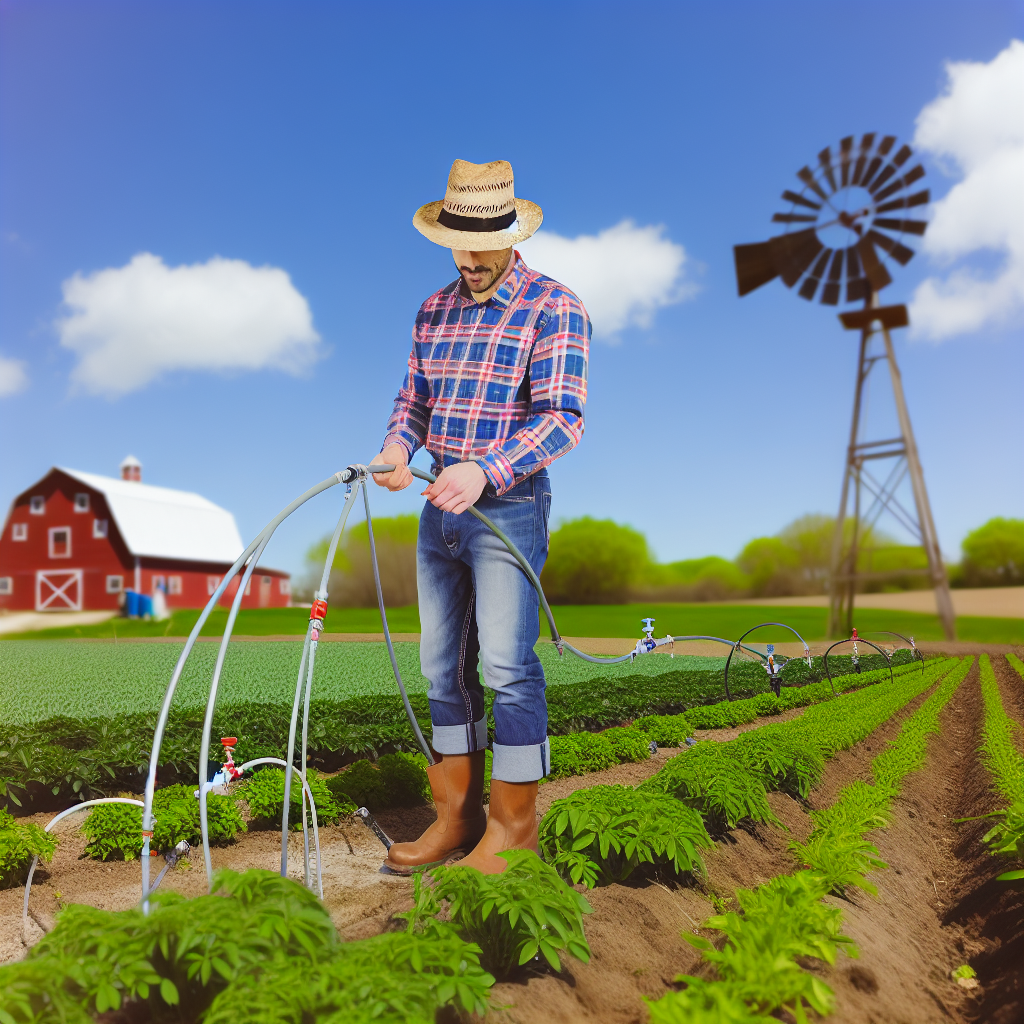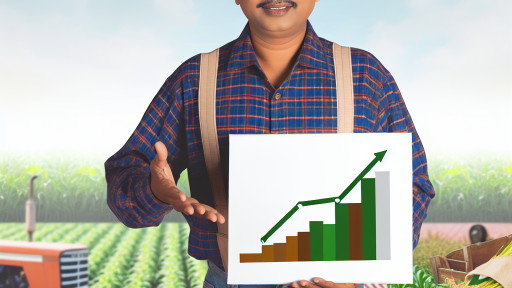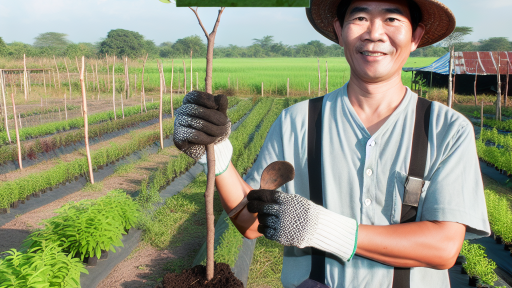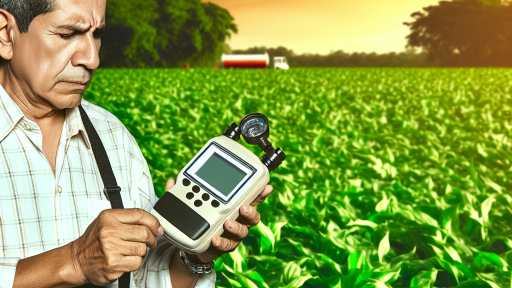Understanding the Importance of Water Conservation in Agriculture
The Growing Need for Water Conservation
Water is a vital resource for agriculture.
Farmers depend on it for crops and livestock.
As climate change progresses, water scarcity increases.
This scarcity affects crop yields and farming profitability.
Consequently, farmers must prioritize water conservation.
Benefits of Water Conservation
Implementing water-saving practices has several benefits.
First, it enhances crop resilience during dry periods.
Additionally, it lowers irrigation costs for farmers.
Moreover, it promotes sustainable agriculture practices.
This ultimately ensures long-term viability for farming operations.
Impact of Water Waste on Agriculture
Water waste can severely harm agricultural productivity.
Wasted water increases operational costs significantly.
Furthermore, it leads to soil degradation over time.
This degradation can reduce a farm’s overall output.
Therefore, reducing water waste is imperative for farmers.
Transform Your Agribusiness
Unlock your farm's potential with expert advice tailored to your needs. Get actionable steps that drive real results.
Get StartedCommunity and Environmental Benefits
Conserving water benefits local communities as well.
It helps maintain healthy ecosystems and groundwater levels.
An abundance of water promotes biodiversity in farming areas.
Therefore, water conservation supports both community welfare and environmental health.
Actively participating in water-saving initiatives is crucial for all farmers.
Assessing Water Usage
Understanding Water Needs
Small-scale farmers must first understand their specific water needs.
This understanding helps farmers make informed decisions.
It is crucial for efficient water management.
Measuring Water Usage
Farmers can measure their water usage effectively using various methods.
One method involves using water meters to track consumption.
Another option is to keep detailed records of water applications.
These records inform adjustments for optimized water usage.
Identifying Crop Water Requirements
Crops have different water requirements depending on species.
Farmers should research and document these needs.
Some crops thrive with less water, while others require more.
Understanding these requirements allows for tailored irrigation strategies.
Evaluating Seasonal Changes
Water needs can vary with seasonal changes.
Farmers must monitor rainfall patterns throughout the year.
Additionally, they should assess soil moisture levels as seasons change.
This data enables farmers to adapt their irrigation schedules.
Utilizing Technology
Technology can greatly assist in water management.
Soil moisture sensors provide real-time data on moisture levels.
Irrigation scheduling apps can optimize watering times based on demand.
Farmers should invest in these tools to enhance efficiency.
Showcase Your Farming Business
Publish your professional farming services profile on our blog for a one-time fee of $200 and reach a dedicated audience of farmers and agribusiness owners.
Publish Your ProfileImplementing Efficient Irrigation Systems
Understanding Drip Irrigation
Drip irrigation delivers water directly to the plant roots.
This method minimizes water loss through evaporation and runoff.
Farmers can schedule watering times to optimize efficiency.
It also reduces weed growth by targeting only the plants.
Drip systems can conserve up to 60% more water than traditional methods.
Benefits of Traditional Irrigation Methods
Traditional irrigation methods include surface and sprinkler systems.
These methods are often less expensive to install initially.
Farmers may use these systems if they have lower water demands.
However, traditional methods can lead to significant water waste.
Evaporation and runoff can diminish water availability for plants.
Comparing Costs and Efficiency
The initial cost of installing drip systems can be higher.
However, the long-term water savings often justify the expense.
On the other hand, traditional systems may have lower costs upfront.
Yet, they may lead to increased water bills over time.
Farmers should evaluate both options carefully.
Choosing the Right Method for Your Farm
Consider your crop type and water availability when deciding.
Drip irrigation works well for high-value crops like tomatoes.
Conversely, traditional irrigation may suit larger fields with grains.
Assess the soil type and topography for optimal effectiveness.
Consult various suppliers for recommendations based on your needs.
Implementing a Hybrid Approach
A hybrid irrigation system combines both methods effectively.
Farmers can use drip irrigation for vulnerable plants.
At the same time, they may use traditional methods for larger areas.
This approach allows flexibility and resource efficiency.
Monitor moisture levels to make adjustments as needed.
Uncover the Details: Renewable Energy Strategies for Climate-Resilient Farms
Rainwater Harvesting Techniques for Small Farms
Understanding Rainwater Harvesting
Rainwater harvesting collects and stores rain for future use.
This technique helps reduce dependence on groundwater and municipal water systems.
Furthermore, it can lead to significant cost savings for small-scale farmers.
Designing a Rainwater Harvesting System
Begin with a proper plan to design your system effectively.
Identify suitable catchment areas like roofs and paved surfaces.
Ensure you have a reliable storage system, such as tanks or cisterns.
Choose materials that prevent contamination of the harvested water.
Calculating Water Requirements
Estimating water needs is crucial for effective harvesting.
Consider the crop types and irrigation methods you use.
Calculate your average water consumption to size your system adequately.
Implementing Filtration Systems
Clean storage is vital for the quality of harvested rainwater.
Use filtration systems to remove debris and pollutants from the water.
Regularly maintain and clean filters for optimal performance.
Utilizing Stored Rainwater
Determine how you will use the harvested rainwater on your farm.
Showcase Your Farming Business
Publish your professional farming services profile on our blog for a one-time fee of $200 and reach a dedicated audience of farmers and agribusiness owners.
Publish Your ProfileIt can serve for irrigation, livestock, and even cleaning purposes.
Monitor water usage to maximize efficiency and sustainability.
Maintaining Your Rainwater Harvesting System
Consistent maintenance will ensure longevity and efficiency.
Regularly inspect catchment areas and storage tanks for leaks or blockages.
Additionally, keep records of rainfall and water usage to analyze trends.
Uncover the Details: Benefits of Agroforestry in Climate-Smart Agriculture
Choosing the Right Crops
Drought-Resistant Varieties
Drought-resistant crop varieties play a vital role in sustainable farming.
They thrive in arid conditions and require less water, which is crucial for farmers.
Additionally, these crops can provide higher yields during dry spells.
Benefits of Drought-Resistant Crops
Farmers experience numerous advantages when growing drought-resistant crops.
Firstly, they lower water consumption significantly.
This reduction helps conserve precious water resources on small farms.
Secondly, these crops are typically more resilient to climate stress.
They often resist pests and diseases better than other varieties.
Examples of Drought-Resistant Crops
- Sorghum is a warm-season grain known for its drought tolerance.
- Millets are small-seeded grasses that thrive in dry conditions.
- Quinoa is a nutritious crop that flourishes in arid environments.
- Teff is another resilient option, popular in many regions.
Selecting the Right Varieties for Your Farm
Choosing the right drought-resistant varieties depends on your specific conditions.
Consider factors such as soil type, climate, and market demands.
Consulting with local agricultural extension services can provide insights.
Additionally, farmers can benefit from networking with peers in the community.
Sharing experiences and results can enhance overall knowledge.
Incorporating Crop Rotation
Crop rotation enhances soil health and reduces disease risks.
This practice allows for better use of water resources as well.
Farmers can alternate drought-resistant crops with other varieties for balance.
Ensure to plan rotations effectively to maximize benefits.
Learn More: Sustainable Farming Practices to Lower Greenhouse Gases

Soil Management Practices to Enhance Water Retention
Understanding Soil Structure
Soi structure plays a critical role in water retention.
Healthy soil structure allows water to infiltrate efficiently.
It also helps hold water longer during dry periods.
Incorporating Organic Matter
Adding organic matter significantly improves soil health.
Compost, manure, and cover crops enhance nutrient content.
These materials increase soil’s capacity to retain moisture.
Organic matter also promotes beneficial microbial activity.
Utilizing Cover Crops
Cover crops protect the soil during offseason periods.
They prevent erosion and combat weed growth effectively.
Additionally, cover crops improve soil structure over time.
They enhance water infiltration and reduce runoff.
Implementing No-Till Farming
No-till farming minimizes soil disturbance.
This practice protects the soil’s natural structure.
It also keeps moisture locked in for longer durations.
Moreover, it reduces erosion and conserves soil nutrients.
Enhancing Soil Mulching
Applying mulch conserves soil moisture effectively.
Showcase Your Farming Business
Publish your professional farming services profile on our blog for a one-time fee of $200 and reach a dedicated audience of farmers and agribusiness owners.
Publish Your ProfileOrganic mulches, like straw or wood chips, are beneficial.
Mulching reduces evaporation and maintains soil temperature.
It suppresses weed growth, preventing competition for water.
Using Water Harvesting Techniques
Implementing water harvesting captures rainwater efficiently.
Techniques include constructing swales and ponds.
These structures redirect water to where it is needed.
They also minimize runoff and maximize soil absorption.
Regular Soil Testing
Conducting regular soil tests identifies nutrient needs.
This practice allows farmers to amend soils accordingly.
Healthy soils contribute to improved water retention.
Testing also helps prevent over-fertilization issues.
See Related Content: Sustainable Farming with Renewable Energy Solutions
Utilizing Mulching Techniques to Reduce Evaporation
Understanding Mulching
Mulching involves covering the soil with organic or inorganic materials.
This technique helps retain moisture in the soil.
Moreover, it prevents weeds from growing.
Weeds often compete for water and nutrients.
Using mulch effectively can improve crop yields.
Types of Mulch
There are various types of mulch you can use.
Organic mulches include straw, wood chips, and compost.
Inorganic mulches consist of materials like plastic and gravel.
Each type has its advantages.
Advantages of Organic Mulch
Organic mulch enriches the soil as it decomposes.
It also improves soil structure and fertility.
Furthermore, it attracts beneficial organisms.
Benefits of Inorganic Mulch
Inorganic mulch offers long-lasting benefits.
It effectively controls soil temperature.
This type of mulch does not decompose easily.
Applying Mulch Effectively
Timing is crucial when applying mulch.
It’s best to mulch plants after the soil has warmed up.
Apply a layer of mulch several inches thick.
Ensure it covers the soil around your crops completely.
Best Practices for Mulching
Keep mulch a few inches away from plant stems.
This prevents rot and encourages healthy growth.
Additionally, monitor moisture levels regularly.
Establishing a Routine
Establishing a mulching routine can maximize its benefits.
Reapply organic mulch as it decomposes over time.
Incorporate new mulch after heavy rainfall or irrigation.
Benefits of Mulching on Small-Scale Farms
Implementing mulching techniques saves water efficiently.
It also minimizes labor costs by reducing weeding efforts.
Consequently, crops thrive in a stable moisture environment.
Showcase Your Farming Business
Publish your professional farming services profile on our blog for a one-time fee of $200 and reach a dedicated audience of farmers and agribusiness owners.
Publish Your ProfileIn the long run, you can expect increased productivity.
Community Collaboration: Sharing Resources and Knowledge on Water-Saving Practices
Building Local Networks
Farmers can benefit from strong local networks.
Collaborating with nearby farmers fosters shared learning.
These networks help in pooling resources effectively.
Moreover, they encourage farmer mentorship opportunities.
Connecting with local agriculture organizations enhances these efforts.
Organizing Workshops and Training Sessions
Workshops provide excellent platforms for knowledge exchange.
Local experts can lead discussions on water-saving techniques.
Farmers can share their experiences and challenges.
This collaboration improves the overall farming community.
Training sessions can focus on practical applications of techniques.
Creating Resource Sharing Programs
Resource sharing among farmers can save costs.
Farmers can share tools, water storage solutions, and equipment.
This reduces individual financial burdens effectively.
Such programs strengthen community ties and support sustainability.
Utilizing Technology for Collaboration
Technology plays a vital role in modern farming collaborations.
Online platforms can facilitate resource swapping efficiently.
Farmers can share success stories and develop best practices.
Mobile applications can help track water usage collaboratively.
Participating in Community Initiatives
Joining local environmental initiatives builds stronger communities.
Community gardens can promote shared water-saving techniques.
Such efforts maximize water efficiency while producing food.
Farmers can advocate for local policies supporting water conservation.
This involvement can pave the way for systemic changes.
Additional Resources
Water-smart farming: review of strategies, technologies … – Frontiers




